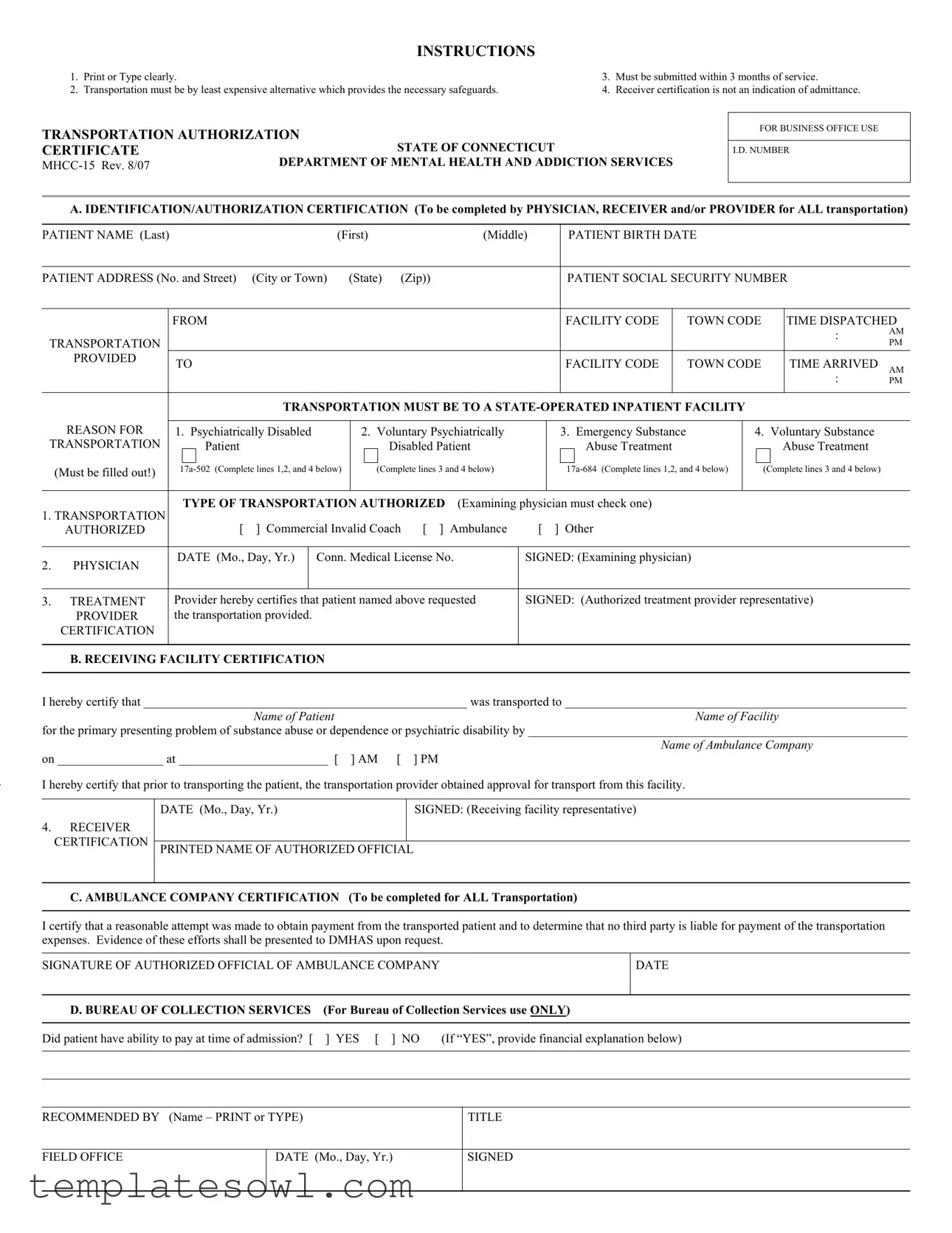What is the purpose of the MHCC 15 form?
The MHCC 15 form serves as an authorization certificate for transportation to state-operated inpatient facilities in Connecticut for individuals with psychiatric or substance use disorders. It ensures that the necessary protocols are followed during the transport of patients and verifies that the transportation options used are the least expensive and most appropriate for the patient's needs.
Who needs to complete the MHCC 15 form?
The form requires completion by various parties involved in the patient’s transportation process. This includes the examining physician, the treatment provider, and representatives from the receiving facility. Each party plays a crucial role in ensuring that the patient's transportation is appropriately authorized and documented.
When must the MHCC 15 form be submitted?
The form must be submitted within three months following the transportation service. Timely submission is important to ensure compliance with state regulations and to support any necessary billing processes.
What types of transportation can be authorized on the MHCC 15 form?
The form allows for several types of transportation to be indicated by the physician. Options include commercial invalid coach, ambulance services, or other types of transport deemed appropriate. The selected mode should be the least expensive alternative while still ensuring adequate patient safety and care.
Does the receiver certification indicate patient admission?
No, the receiver certification included in the MHCC 15 form does not indicate that the patient has been admitted to the facility. It simply signifies that the patient was transported to the facility for assessment or treatment. Acceptance of the patient into the facility is a separate process.
What is required from the ambulance company for the completion of the form?
The ambulance company must certify that they made reasonable attempts to obtain payment from the patient and confirm that no third party is liable for transportation expenses. This certification must include a signature from an authorized official of the company. Documentation of efforts made to ascertain payment will need to be provided to the Department of Mental Health and Addiction Services if requested.

